Digital Inclusion Coalition Expands with New Platform
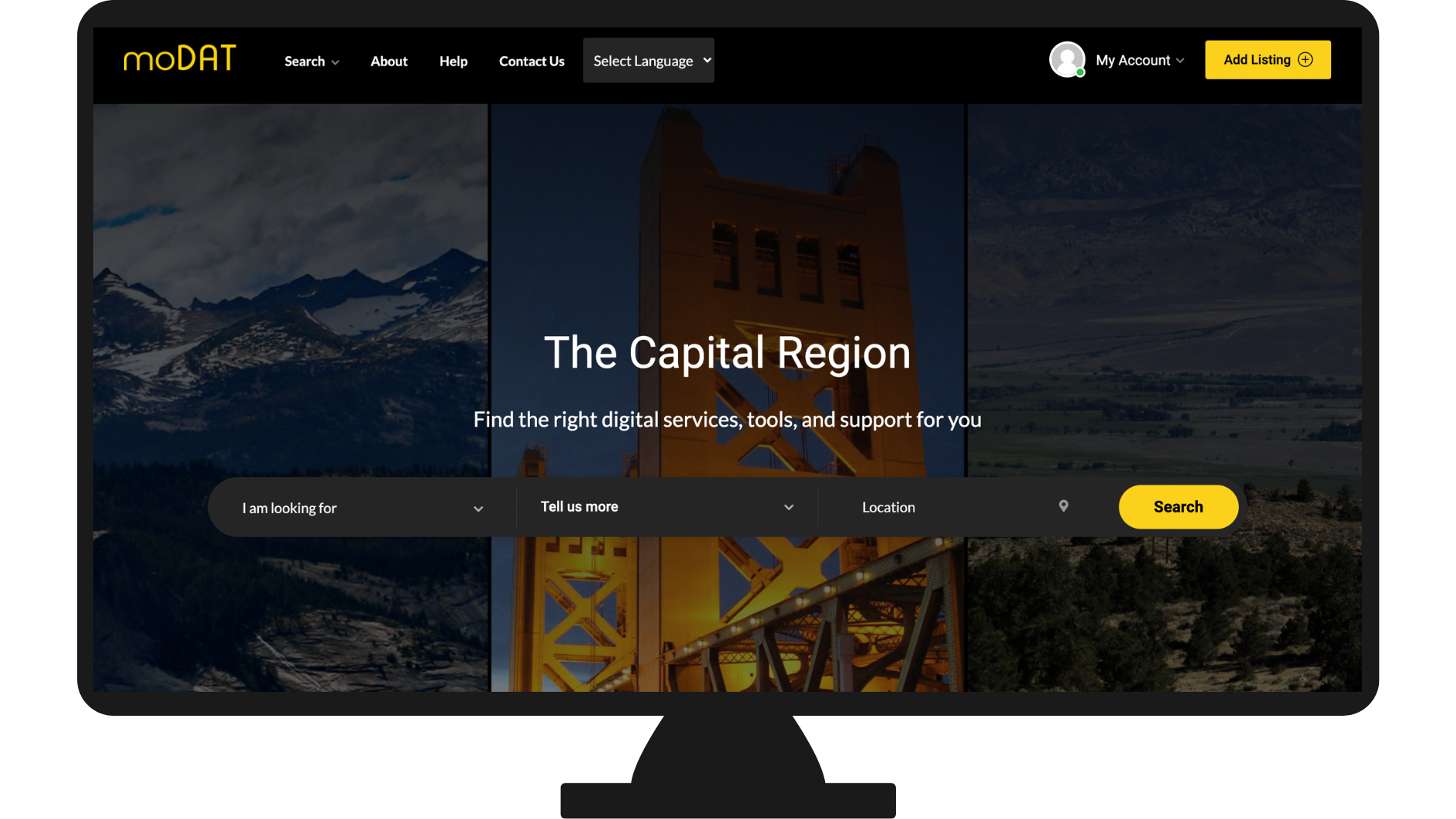
The last two years have proven the significance of digital inclusion to accessing opportunity and economic prosperity. Our nation is experiencing unprecedented investment, including the Affordable Connectivity Program through the Federal Communications Commission (FCC) – a $14.2 billion piece of the Infrastructure Investment and Jobs act, and the biggest investment in broadband this country has ever seen. The Greater Sacramento region is well poised to garner and maximize investments in digital inclusion due in no small part to the dedicated contributions of the steering committee, working groups, and members of the Sacramento Coalition for Digital Inclusion (Coalition).
This effort started in the fall of 2018, inspired by a Brookings Institution report on the strengths and weaknesses of the Sacramento Capital region, and culminated in the formation of the Coalition. Over the years, the work of the Coalition has brought together partnerships, thought leaders, and collaborative investment to address the digital inclusion needs of our region especially during the heightened needs of the pandemic.
A Year of Impact
In the last year, the Coalition has hosted eight full Coalition meetings and over 25 working group meetings in three key areas; Broadband Access & Adoption, Hardware Devices, and Digital Literacy/Digital Skills to build a framework and key strategies including:
- Renaming, redesigning and taking over management of the Coalition website to provide easy access to resources and information
- Operationalizing a digital inclusion portal to provide easy access to free resources for community members and the organizations supporting them
New Name & Expanded Region
The Coalition recently changed its name to the Capital Region Coalition for Digital Inclusion, reflecting an expanded service area and regional approach to creating more opportunities for digital equity. This name change represents the expansion to serve a 9 county region supported by investment from the Capital Region’s four workforce boards, SMUD, AT & T and Union Bank, and magnifies opportunities to address both rural and urban digital equity barriers, and convene organizations from across the region to better inform, connect, and partner to promote community success.
New Digital Inclusion Portal Serving Nine Counties
Valley Vision is pleased to partner with mohuman, a non-profit connecting low-income communities with digital resources, to create the Capital Region Digital Inclusion Portal. Through this partnership, a streamlined platform has been created for the Capital Region, allowing community members and those serving them to easily search for resources – including free and low cost computers, internet services, digital skill building tools and training. Among other resources, the Digital Inclusion Portal connects individuals with training on Microsoft Office and Google Suite, as well as career search skills and more! The platform also allows organizations with digital inclusion resources to add their information to the Portal (after a review process) and claim their listings to provide additional description and detail.
Nishal Mohan, Founder of mohuman, describes the work of the Coalition and the impact of the Portal: “The Capital Region and their digital inclusion coalition have been doing a fantastic job of regional coordination to serve digitally un and underserved individuals and families. Now with a personalized and easy to use portal, all of their free or low-cost digital inclusion services and resources are available to the public in an easy to use, accessible, expandable, and sustainable platform so that more people can move towards equity faster, more effectively, and at scale. Congratulations to Valley Vision and partners on bringing a powerful tool with the people for the people of the Capital Region!”
The Coalition’s goal is for the Portal to serve as a centralized source for community members and organizations to find and upload resources for computing devices, internet connectivity, and digital skill building. We need your assistance to create an expansive and thorough network of listings and are calling digital inclusion advocates to aid us in the following ways:
- Share the portal with community members and organizations to utilize for easy access to digital resources
- Add listings through the portal or email nghia.nguyen@valleyvision.org with information on digital inclusion organizations, programs, or online services that need to be included
- If you work at or manage an organization that provides digital inclusion resources, claim your listing, and make it your own!
With your help and assistance, we will continue the momentum to improve digital inclusion for our Capital Region’s current and future digital citizens. To keep up with Valley Vision’s work to advance a future-ready workforce in the Sacramento region, subscribe to our 21st Century Workforce email newsletter!
Caitlin Blockus is a Valley Vision Project Manager supporting initiatives within the 21st Century Workforce impact area.
Yolo County’s YoloWorks! Launches Virtual Employment Center

Job attainment and security are more important than ever, but unpredictable COVID-19 regulations and a turbulent economy have proved it difficult for applicants to access the employment specialists and career services they need. Prior to the pandemic, YoloWorks!, under the Yolo County Health and Human Services Agency, was able to offer in-person career center support and counseling to Yolo County residents from its local offices. However, without a uniform method of providing real-time employment support virtually, the employment center needed to pivot to maintain the full extent of its workforce services.
To address this challenge, YoloWorks! Program Coordinator Erica Johnson developed and aided in the launch of the employment center’s first virtual career center platform. The Virtual Employment Center went live on November 16, enabling Yolo County residents to virtually receive career and vocational training services from employment specialists and case managers.
Making Career Help Available & Accessible
Open 8:00 AM – 4:00 PM Monday through Friday, the Virtual Employment Center (VEC) opens up a myriad of new connections between job seekers and employers. Offering these essential services virtually eliminates a multitude of barriers for new entries to the workforce, including maintaining personal health, reducing travel costs, and more. Training opportunities and the location of available jobs are just two examples of the many services offered by the VEC.
“This is exactly the type of support we want to provide the people of Yolo County.”
Erica Johnson, Yoloworks! Program Coordinator
“Supporting the needs of job seekers with our intelligent chatbot has revolutionized how citizens discover jobs in Yolo County,” said Erica Johnson, YoloWorks! Program Coordinator. “Job seekers can now schedule time with YoloWorks! employment specialists to locate relevant work anytime, anywhere, and have common questions answered quickly in their native language. This is exactly the type of support we want to provide the people of Yolo County.”
Digital Inclusion and the Community
The VEC is a platform that requires internet connectivity to fully utilize. Thus, this calls for adequate infrastructure in the community it serves. YoloWorks! has partnered with Google to provide the “Loan to Own” Chromebook Program for those who might not have access to the devices they need to be successful in this era of virtual integration. Successful completion of this program allows participants to permanently keep their Chromebooks, providing them with a computing device and the ability to earn a work-skills online certificate with digital badging. As of December of 2021, 180 of 250 Chromebooks have been distributed to Yolo County residents. 35 Yolo County residents have completed the program and now own these devices. And to ensure that the platform is accessible to as many communities as possible, Yolo County job seekers can utilize the portal’s chatbox in the region’s three most common languages—English, Spanish and Russian.
This partnership has also granted Yolo County’s YoloWorks! with 500 Google Career Certificates, which are available to Yolo County residents to apply for and receive for free. These certificates include credentials in areas like IT, Project Management, User Experience Design, and Data Analytics. They also provide interested participants with valuable skills such as interviewing tips and connections to 140+ companies that are a part of an employer consortium consisting of nationally-recognized organizations who are hiring for entry-level talent.
From Tragedy Comes Opportunity
With the rise of online outreach and virtual events comes a unique need for collaboration between employers and communities. The VEC constantly works with community partners to ensure that job opportunities are being announced with ample time for applicants to gain access to workstations or smartphones. Additionally, the portal itself promotes ease of access by giving patrons the ability to attach necessary documents (resumes, applications, etc.) and syncing with the account’s Google Calendar. From supplying required technology to providing a user-friendly interface, the VEC is already making waves in terms of reaching the people who would benefit the most from its services.
“The pandemic really shifted the way in which we think, work, and live,” Johnson said. “We wanted to put a service out there for folks that is always available, whether or not they want to come in person.”
To keep up with Valley Vision’s work to advance a future-ready workforce in the Sacramento region, subscribe to our 21st Century Workforce email newsletter!
Danielle Susa is a Valley Vision Project Associate supporting initiatives within the 21st Century Workforce impact area.
Renee John is a Valley Vision Project Leader managing initiatives within the 21st Century Workforce impact area.
Our Bright Future in 2022: Best Case Scenarios for the Sacramento Region
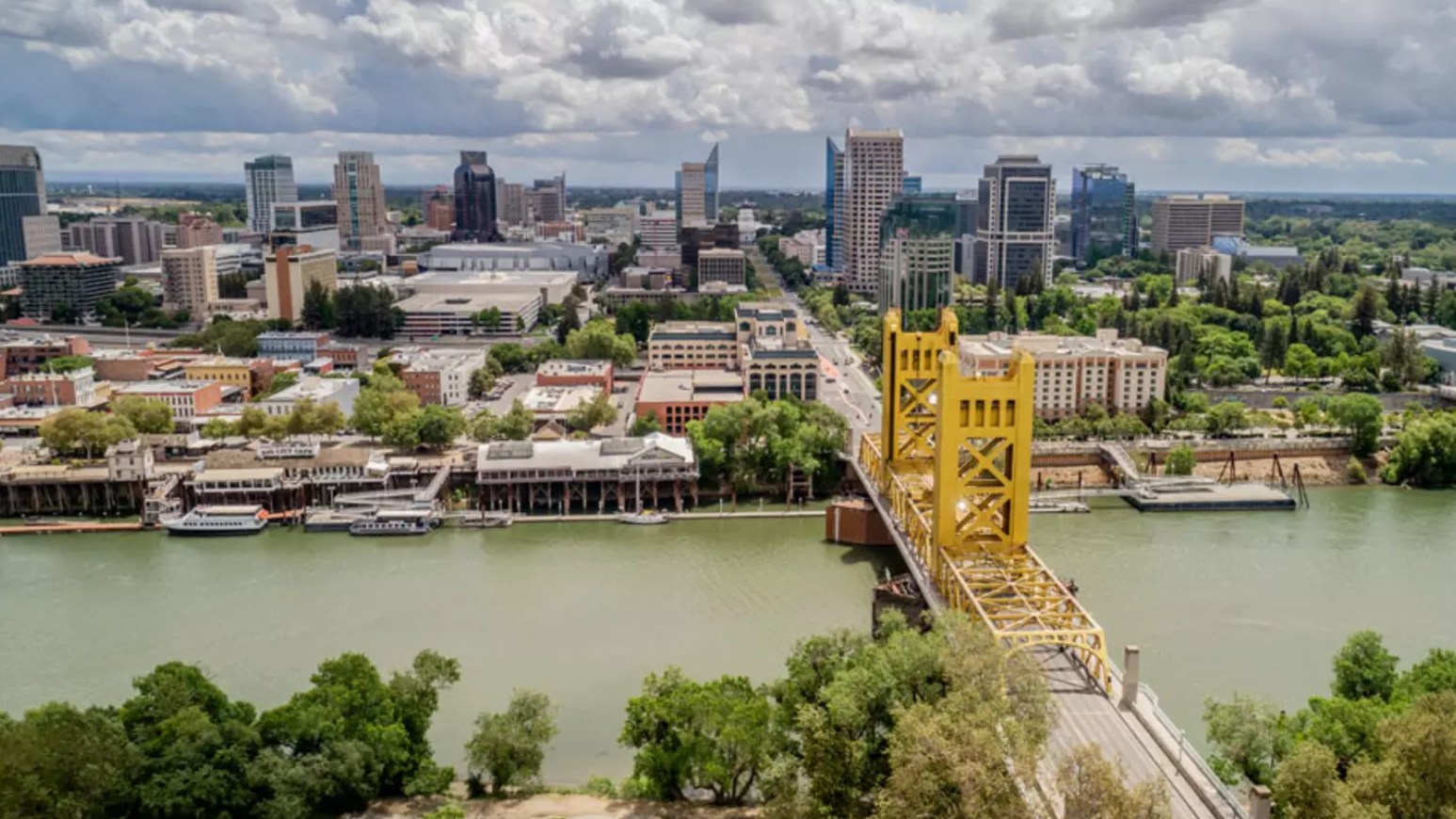
Valley Vision has a longstanding making “bold predictions for the new year.” This is my second new year as CEO in which I’ve held this responsibility and, I have to say, these years have not been at all predictable! 2021 did not go as anyone predicted, and 2022 has already gone sideways. So, what do I think we can expect for 2022? The unexpected – what else? Instead of dwelling on the uncertainties that we are all living with everyday, I’d like to envision our brightest future and best case scenarios for the Sacramento region in 2022. What can we achieve, even in the face of uncertain times?
Major Economic Recovery Dollars Invested in the Capital Region
State and federal government recovery and infrastructure programs are paving the way for historic investments in economic recovery, workforce, broadband, transportation, climate resilience, and more. With so many competitive grant processes, our region has the opportunity to advance major big picture initiatives and win the dollars to fund them. Our best case scenario: we rise to the challenge as a region and bring in transformative change ushering in equitable recovery for our region. Learn more about and get involved in Valley Vision’s effort to secure Community Economic Resilience Funds for our region as a start.
The Capital Region is a National Leader in Low Carbon Economy and Climate Resilience
Our region has some of the most ambitious emission reduction goals in the nation and the ingredients to make meaningful progress to foster clean innovation in advanced mobility, clean energy, electrification, and climate smart agriculture and overall climate adaptation. In our best case scenario, we advance ambitious and cohesive regional plans and initiatives that make our region more climate resilient and grow our innovative and vibrant clean economy. Check out economic goals identified in the Prosperity Strategy, SMUD’s ambitious 2030 Plan, the California Mobility Center, and SACOG’s Green Means Go initiative for a few examples of our regional commitment to a clean economy.
Sacramento Community Rallies to Address Homelessness
Our unhoused population has increased throughout the pandemic and divisions of how to address housing and homelessness have overtaken our ability to advance reasonable solutions. In our best case scenario: Public agencies, elected officials, civic organizations, service providers, advocates, and residents work together to implement new programming, effectively site new facilities, and meaningfully reduce the number of people who are living unhoused and on the streets. Learn more about the City of Sacramento’s Response Plan.
The Sacramento Region Closes the Digital Divide
There are significant dollars available this year to support the expansion of broadband infrastructure and digital inclusion, resulting in increased access to the Internet and opportunities to improve digital equity in communities throughout the region. In our best case scenario: we are able to capture those dollars; build our broadband infrastructure and address technology access; and create digital literacy and skills training for all who need it (in our best case scenario we win funding to support digital skills training through the Good Jobs Challenge). Learn more about the Infrastructure and Jobs Act and Valley Vision’s work on broadband access and managing the Sacramento Coalition to close the digital divide.
The Comeback of Downtown Sacramento
In 2019, downtown Sacramento was building on the momentum of the Golden 1 Center, breaking ground with Railyards development and the new SAFE Credit Union Convention Center, and more. Then – the pandemic hit. In our best case scenario: downtown picks up where it left off and then some – building on existing assets and embodying a vibrant and equitable pandemic recovery as the economic hub of our region. We envision workers returning to offices, enhanced public transit, a vibrant arts and culture scene, robust tourism and events, and safe, clean, and humane conditions for all. Check out the work of the Downtown Sacramento Partnership.
Are these headlines just pipe dreams? They are optimistic but I believe these scenarios are well within our grasp. We CAN usher in major investments this year and we DO have the ability to advance ambitious, innovative, equitable, and collaborative solutions. There are tremendous and historical investment opportunities, many expressed through the American Rescue Plan, the California 2022-2023 Budget proposal, the Jobs and Infrastructure Bill, and more. In addition to these programs, we have seen how communities have worked together to address the issues that most impact our communities throughout the pandemic, creating lightning-fast emergency response and adapting quickly to meet community needs. We can envision and enact a more equitable, sustainable, and prosperous future for our region. What will be required? A healthy civic culture and dialogue, the creation of shared agendas, a commitment to collaboration, and a willingness to learn and try new things.
Let 2022 be the year that – despite unpredictable conditions and continued challenges – our region finds ways to achieve our best case scenarios and create systems that are stronger, more adaptive, and more equitable, sustainable, and vibrant than ever before.
To keep up with Valley Vision’s work to advance livability in the Sacramento region, subscribe to our Vantage Point email newsletter!
Evan Schmidt is Valley Vision’s Chief Executive Officer.
What Are You Grateful for in 2021?
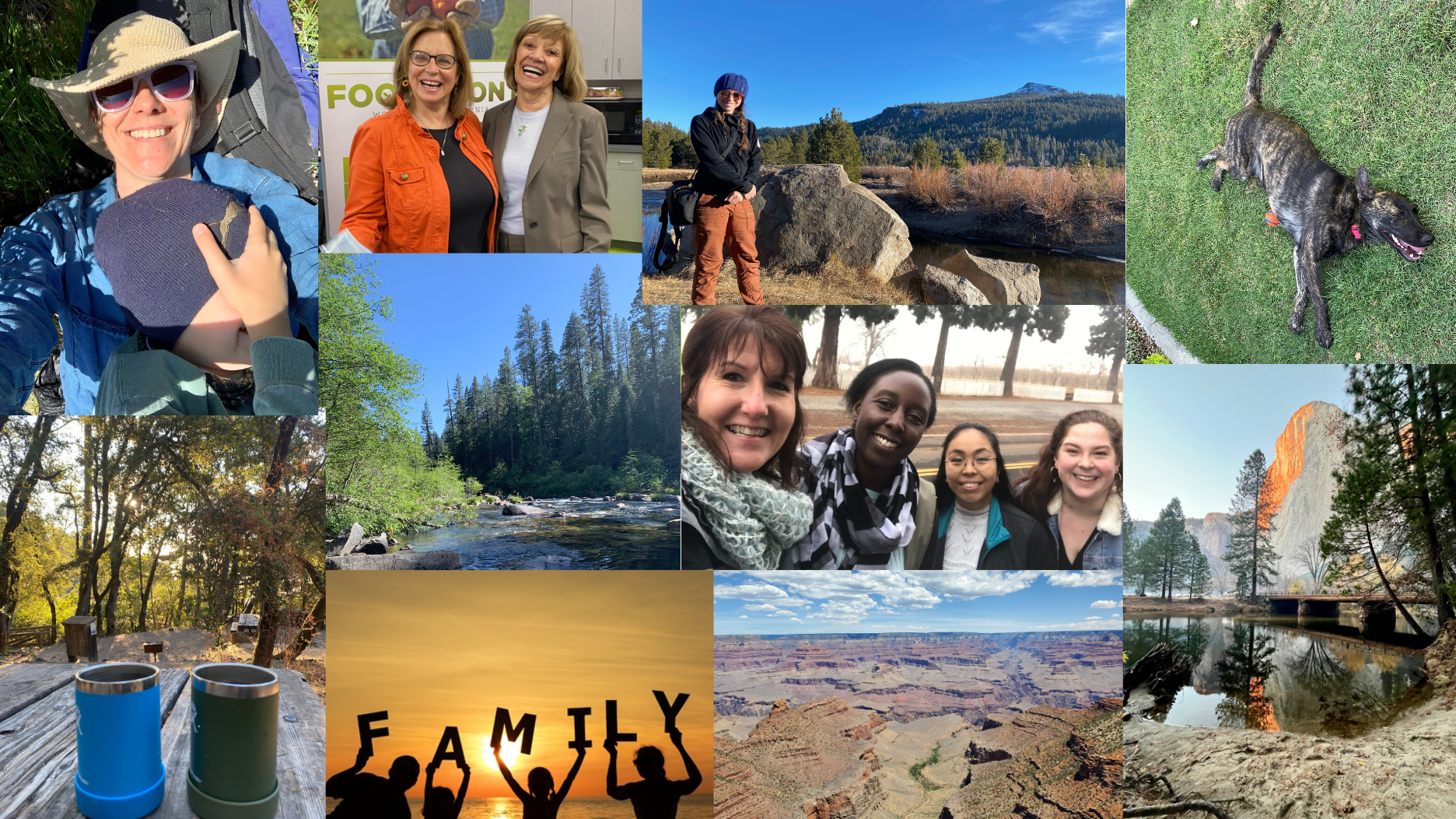
As each year comes to a close, Valley Vision staff reflect on what we have been grateful for over the past year. It’s an annual tradition, and we are excited to share our reflections with you. Thank you for continuing to support and collaborate with us!
Isa Avanceña: “I’m grateful for all the meals shared with family and friends, and time spent outdoors! I’m especially grateful for finally being reunited with my parents after more than two years of not being together! They arrive on Saturday from the Philippines.”
Renee John: “I am grateful for an amazing team dedicated to improving the lives of our region’s residents and for the collaborative efforts of a whole ecosystem of partners striving for a better future for all.”
Alan Lange: “I was grateful to read that charitable giving throughout the nation reached record levels in 2020. I am hopeful that the trend continued through this year. It is heartening to see individuals, businesses, and foundations step up when so many are in need. (And yes, I’m also grateful that the stock market helped buoy the charitable spirit!).”
Brittnii Johnson: “I’m grateful for all the simple things in life that I don’t take the time to appreciate. For example, family, friends that became family, the ability to care for myself, and having a place to live. I’m grateful to experience love in action.”
Grace Kaufman: “I’m grateful for experiences that provide me with a deeper appreciation of life and free me from distractions.”
Angelina Olweny: “I am grateful for good health and the opportunity to be part of a team and organization that is committed to making a positive difference in communities in the Sacramento region.”
Trish Kelly: “I’m very grateful that loved ones have made it safely through the year, that we are able to do work at Valley Vision that contributes to the community, and that the people we work with enrich our lives through rich and caring partnerships.”
Danielle Susa: “I am grateful for the people in my life who remind me why life is precious. I am also grateful for the simpler moments that remind me why life is beautiful.”
Evan Schmidt: “I’m grateful for the health and wellbeing of loved ones over the course of the year, the ability to do work that improves lives and communities, and moments of fun and levity with family and friends.”
Caitlin Blockus: “I am grateful to have adopted my sweet rescue dog in 2021, who has taught me many lessons in patience and understanding, and brought me so much joy and love. I am also grateful for COVID-19 vaccines and the ability to reconnect with my family.”
Natalie Garcia: “I’m grateful to have the opportunity to explore California’s diverse landscapes through van camping. And also grateful to have met some new awesome and authentic friends.”
Adrian Rehn: “I am grateful that myself and my loved ones have their health, and for being able to safely explore much of our country this past Summer.”
The Prosperity Partnership Helps Secure Millions for Inclusive Economic Impact for Greater Sacramento Region
Online webinars to be held starting November 18 for more information on access to funding.
SACRAMENTO, Calif. (November 3, 2021) – The Greater Sacramento region successfully scored two very significant wins via state of California legislative bills that will amount to millions in investment for inclusive economic development including: up to $38 million in funding for Green Means Go; and passage of the $600 million Community Economic Resilience Fund (CERF). Both of these victories were bolstered by the collective advocacy and leadership of The Prosperity Partnership which includes: Greater Sacramento Economic Council, Sacramento Asian Pacific Chamber of Commerce, Sacramento Metropolitan Chamber of Commerce, Sacramento Area Council of Governments (SACOG) and Valley Vision.
“These two victories at the state-level are critical towards the Greater Sacramento region’s recovery and economic resilience, as they not only deliver on real-time investment for jobs, business and infrastructure, but also demonstrate the collective value and impact we have when we work together,” stated The Prosperity Partnership in a joint statement.
Green Means Go is a multi-year pilot that implements the region’s Sustainable Communities Strategy. The pilot aims to lower greenhouse gas emissions and be a catalyst for economic development in the six-county Sacramento region by accelerating infill development. Green Means Go is led and implemented by SACOG, which recently was awarded over $38 million from the state to fund this one-of-a-kind state program. The funds will be critical to accelerate development within existing communities and reduce barriers to building more housing, increasing mobility options and accelerating EV deployment. Outreach and technical assistance will begin in January 2022 for funding requests with all funds to be used by June 30, 2026.
CERF is designed to build a more robust, sustainable, and equitable recovery across all sectors of California’s economy by supporting regional collaboratives in the planning and implementation of inclusive economic strategies towards both recovery and long-term resilience. CERF is funded by a $600 million one-time federal American Rescue Plan Act allocation. Developed in alignment with priorities identified through California Forward’s Roadmap to Shared Prosperity and supported with direct advocacy of The Prosperity Partnership, it will advance pivotal, place-based initiatives and high-road partnerships that reach into under-resourced neighborhoods, regional networks and rural communities; many of which are identified in the core strategies in the work by the partnership through Our Path Forward: The Prosperity Strategy.
An informational session on CERF and funding for organizations and local jurisdictions in Colusa, El Dorado, Placer, Sacramento, Sutter, Yolo and Yuba counties will be held virtually on Thursday, November 18 from 1:00 – 2:00 PM PT. For more information and to register, please visit valleyvision.org to register.
About Our Path Forward and The Prosperity Partnership
Our Path Forward: The Prosperity Strategy is a strategic framework and action plan for the six-county Greater Sacramento region that prioritizes the region’s core economic initiatives for a more prosperous, equitable and resilient economy. The framework was released in May 2020 as both an economic strategy as well as recovery plan. The framework parallels the goals and strategies of the region’s Comprehensive Economic Development Strategy (CEDS) and includes initiatives over the next five years that focus on a cluster-based economy, infrastructure investments and developing a sector-based workforce.
The Prosperity Strategy is the collective work of five regional organizations known as The Prosperity Partnership including Greater Sacramento Economic Council, Sacramento Asian Pacific Chamber of Commerce, Sacramento Metropolitan Chamber of Commerce, Sacramento Area Council of Governments and Valley Vision.
For updates and to learn more visit theprosperitystrategy.org.
Press Contact:
Traci Rockefeller Cusack at 916-213-4373
traci@trockcommunications.com
###
Workers with Disabilities, Untapped Potential

The month of October is designated Disability Employment Awareness Month to recognize the contributions of individuals with disabilities to our workforce and economy. Originally established in 1945, the first week of October was designated as National Employ the Physically Handicapped Week. In 1962, the word “physically” was removed and 25 years later the week was expanded to one month and renamed National Disability Employment Awareness Month. This year’s theme is appropriately named “America’s Recovery: Powered by Inclusion.”
A significant milestone in the fight for disability employment rights occurred on September 27th of this year when Governor Newsom signed Senate Bill 639 into law. This bill prohibits employers from paying employees with disabilities below minimum wage. It also creates a path that transitions workers with disabilities from working in a segregated setting with solely people with disabilities to fully integrated settings. With the signing of this bill, California becomes the seventh state in the nation to outlaw paying workers with disabilities a subminimum wage. The bill sets forth the conditions for a phase-out strategy by January 1, 2025, and requires the involvement and input from people with disabilities.
How Did We Get Here?
In 1939, when President Roosevelt signed the Fair Labor Standards Act (FLSA) into law, there was a fear people with disabilities, particularly returning World War I veterans, would have a disadvantage and experience high rates of unemployment if employers had to pay comparable wages. Therefore, a provision was created to allow workers with disabilities to receive lower wages. Despite the allowance of subminimum wage categories, unemployment rates for people with disabilities have consistently remained disproportionately high compared to the general public. The employment to population ratio for people with disabilities in December 2019 was 30.6, compared to 74.8 for non-disabled people. Additionally, the use of subminimum wage categories has had the unfortunate effect of limiting the potential and advancement of workers with disabilities and resulted in unfair pay compared with their non-disabled peers as reported by the U.S. Department of Labor. Working adults with disabilities are two times more likely to be living in poverty than their non-disabled peers.
WIOA Propelled the Cause
When the Workforce Investment Act was amended in 2016 to the Workforce Innovation and Opportunity Act (WIOA), one of the many provisions was the creation of an Advisory Committee on increasing Competitive Integrated Employment (at least minimum wage and integrated setting) for individuals with disabilities. The work of the Committee was intended to address the pervasive unemployment and low workforce participation among individuals with significant disabilities in the United States. Another backdrop to the Committee’s work was the evolving federal disability employment policy which presumes that all individuals with disabilities are employable when opportunity and support are available.
The Time Has Come
With the signing of Senate Bill 639, Competitive Integrated Employment has the capacity to be a pathway out of poverty for thousands of individuals in our community. By and large, people with disabilities want to work. Changes in work structure, including remote work, have the ability to allow additional opportunities for individuals with disabilities to participate more fully in our economy. Often, accommodations can be the barrier to gainful employment. With the increased opportunity to work from home, many individuals have the opportunity to obtain and maintain employment in an environment equipped and conducive to their health. Many studies document employees with disabilities work harder, are more productive, more loyal, and show a lower absenteeism rate than their non-disabled peers. In the current environment of large-scale job openings and a shortage of workers, casting a wider net can yield immediate benefits.
To keep up with Valley Vision’s work to advance a future-ready workforce in the Sacramento region, subscribe to our 21st Century Workforce email newsletter!
Angelina Olweny is a Valley Vision Project Associate supporting initiatives within the 21st Century Workforce impact area.
Renee John is a Valley Vision Project Leader managing initiatives within the 21st Century Workforce impact area.
Bringing a Region Together Around Housing

California needs more housing. The cost of housing is too high and options available are too limited. These factors are threatening the prosperity of our State. There is little opposition to any of the preceding statements. But friction often emerges as the details of proposed solutions are explored. What type of housing is needed? Where should housing be built? What codes and standards should dictate development? Who should pay the direct and ancillary costs for development? Bringing jurisdictions, developers, residents, and other directly interested stakeholders to consensus on these matters can be grueling. But the payoff has generational impact on the vibrancy of a region.
Stanislaus County initiated the Housing Stanislaus effort to build a common vision for housing in Stanislaus County, and has engaged Valley Vision to facilitate the effort. Valley Vision will work with stakeholders of all backgrounds and interests to establish a shared understanding of the needs, challenges, and opportunities associated with housing in Stanislaus County. That information will be used to build a unified and actionable countywide vision and strategy framework that takes into account priorities, policies, and investments to accelerate affordable and market-rate housing in Stanislaus County.
Valley Vision’s goal is to keep all parties focused on the collective best interest. It will require sacrifices by some, creative solutions by many, and active contribution of ideas and perspectives by all. Valley Vision will be engaging the diverse stakeholders through interviews, listening sessions, surveys, and other forums to collect as much insight as possible, test ideas, and find consensus on what is needed.
All interested parties should keep an eye on the HousingStanislaus.org website (under construction but will be launched soon), or sign up for the Housing Stanislaus email newsletter to track progress and discover opportunities to weigh in.
To keep up with Valley Vision’s work to advance livability in the Sacramento region, subscribe to our Vantage Point email newsletter!
Alan Lange is Valley Vision’s Managing Director, and project lead for Valley Vision’s Healthy Communities Impact Area.
Serving Refugees – A Lesson in Collaboration
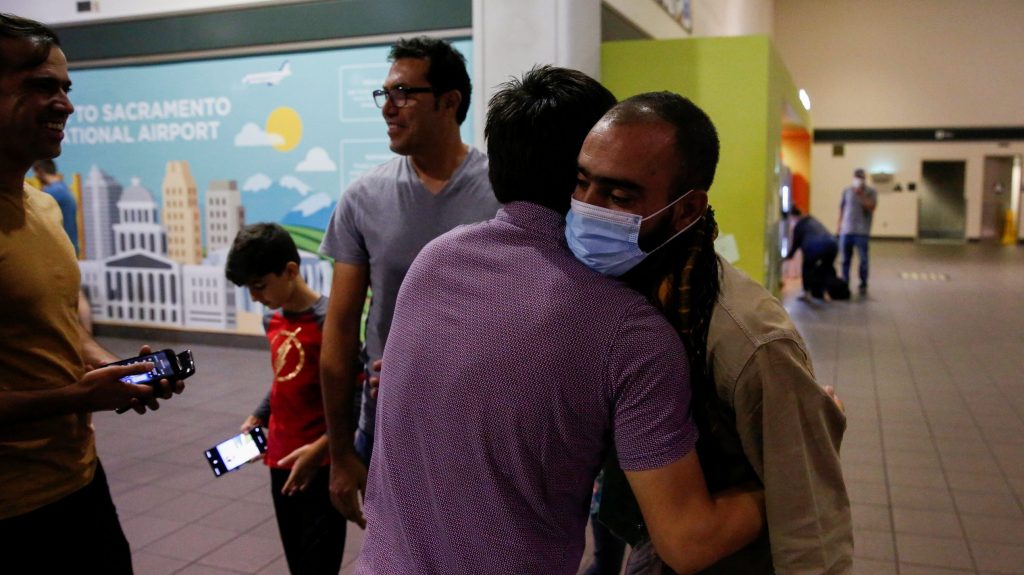
Valley Vision is creating a vibrant and prosperous economy by supporting development of a talented workforce – educated, trained and ready – for the 21st Century economy. The current wave of Afghan refugees has drawn attention to how these new arrivals are integrated into our local workforce system. A refugee is a person living outside of his or her country of nationality who is unable or unwilling to return because of persecution, or a well-founded fear of persecution on account of race, religion, nationality, membership in a particular social group, or political opinion. The Sacramento region resettles a large number of refugees each year and is considered one of eight refugee impacted counties in California. Our region has begun receiving what is expected to be approximately 1,600 refugees, including Special Immigrant Visa holders, in the coming months.
A Collaborative Approach
In California, refugee programs are administered through the Refugee Programs Bureau (RPB), a division of the Department of Social Services. In a uniquely collaborative arrangement, goals are achieved by partnering with counties, workforce boards, nonprofits, school districts, faith-based, ethnic and community organizations. Each County Board of Supervisors determines which agency within the county governmental structure will be responsible for administering the refugee programs. Most often the County Welfare Department (CWD) is the designated agency. However, in Sacramento, there is a unique partnership between the CWD that oversees the delivery of public assistance, and the Sacramento Employment and Training Agency (SETA), which oversees the delivery of employment and acculturation services and overall refugee program coordination. Since 1983, SETA has been responsible for planning, coordinating and managing grant funds allocated to the county to provide refugee-specific employment services. The local resettlement agencies regularly convene forums open to refugees, service organizations and other stakeholders, in an effort to continuously collaborate and improve upon services.
The Refugee Experience
When refugees first arrive at the Sacramento International Airport, they are greeted by representatives from one of five local resettlement agencies; Sacramento Food Bank and Family Services, Opening Doors Inc. Sacramento, Lao Family Community Development Inc., World Relief Sacramento and International Rescue Committee. These agencies provide welcome, resources and introduction to services to help individuals and families survive and acclimate for their first 90 days in the country. Shortly before the arrival of the refugees, the resettlement agencies arrange for their housing, which includes basic furnishings, appliances, climate-appropriate clothing, and some food typical of the refugees’ culture. After arrival, resettlement agencies help refugees start their lives in the U.S., assisting them with applying for a Social Security card, registering children in school, learning how to access shopping facilities, arranging medical appointments, and connecting them with needed social, employment and language services.
Refugee status is accompanied by employment authorization and refugees are expected to become employed quickly in order to afford the high cost of living in our region and to begin repaying their loans to travel to the U.S., which can cost thousands of dollars. These conditions make employment attainment essential to the well-being of refugee families. SETA works with a number of community based organizations, school districts and resettlement agencies to assist refugees with transitioning to employment as quickly as possible. Services provided include Vocational English as a Second Language training, employment placement services, on the job training, navigator services, social adjustment and cultural orientation. A full list of refugee employment service providers is located on SETA’s website.
Of the more than 20 million refugees of concern to the United Nations, less than 1% are resettled each year. Although historically the U.S. has resettled more refugees than other country, its resettlement program has waned recently with the most recent fiscal year having the lowest U.S. refugee limit since 1980. Each year the number accepted to the U.S. is set by the President in consultation with Congress. Additional information on this most recent wave of refugees, refugee resettlement and services is available at the following links: California’s Afghan Arrival Response, videos on the Refugee Resettlement experience, and the Sacramento Region’s local services. Creating inclusive opportunities for the regional refugee community is a critical function of our workforce system, and the collaborative efforts of these partners are critical to ensuring a high quality of life for these populations.
To keep up with Valley Vision’s work to advance a future-ready workforce in the Sacramento region, subscribe to our 21st Century Workforce email newsletter!”
Renee John is a Valley Vision Project Leader managing initiatives within the 21st Century Workforce impact area.
Seven Leaders Join Valley Vision Board in 2021
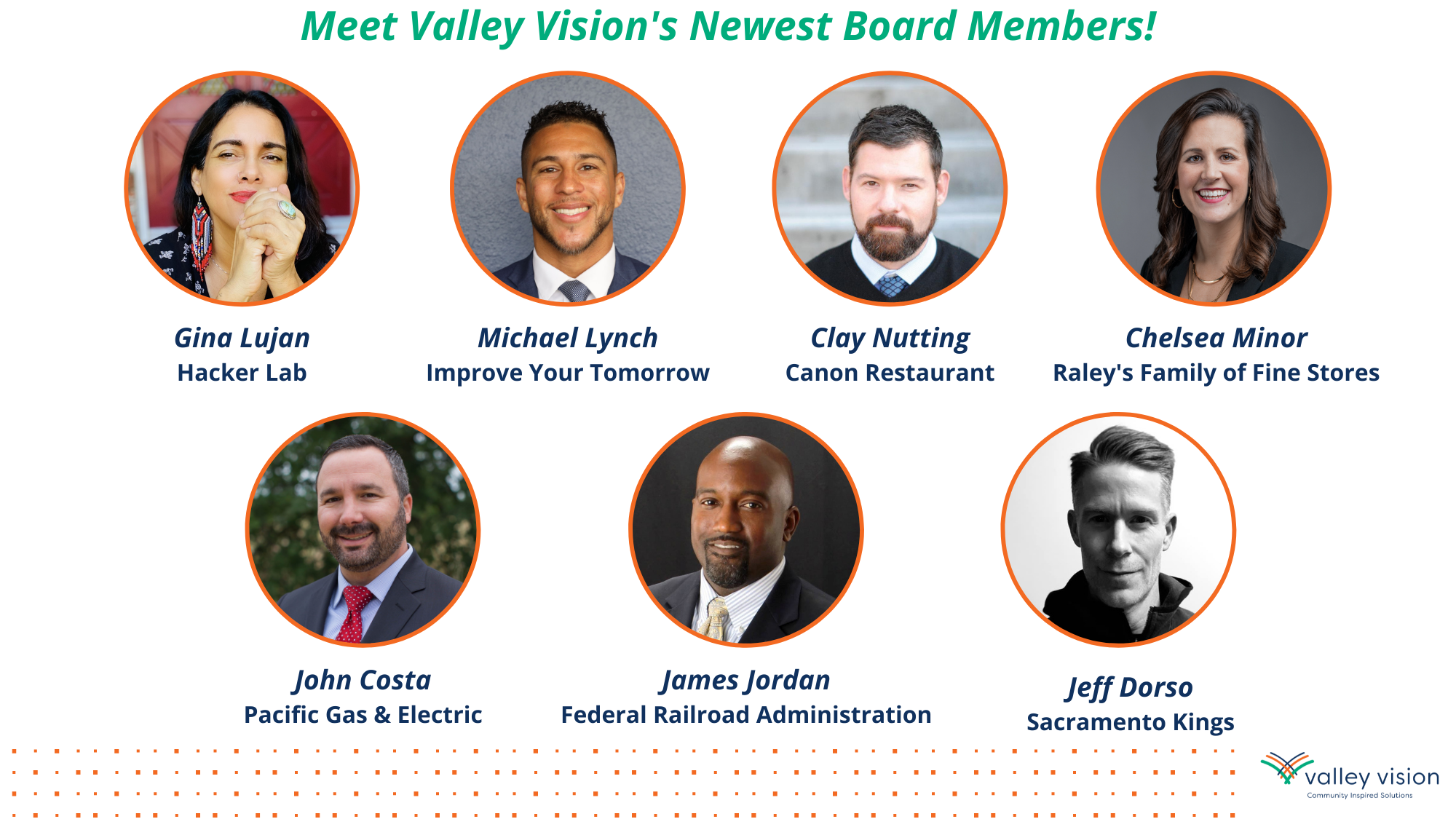
I am thrilled to share the news that seven truly outstanding local leaders have joined our organization’s Board of Directors in recent months, each who uniquely compliments Valley Vision’s core focus areas of workforce, innovation, food systems, civic engagement, and healthy communities. These individuals join an already impressive slate of directors who are committed to helping build a better future for our region.
Valley Vision is a unique organization with a special purpose: to make our communities the most livable in the nation. That’s why our board is composed of a diverse set of dynamic leaders who rely on Valley Vision’s independent research to identify current and future opportunities and to help solve complicated issues affecting quality of life through regional action. Their priority is to place the region’s future first and I am pleased to introduce you to them.

Meet Valley Vision’s 2021 slate of board members:
Chelsea Minor is Corporate Director of Public Affairs for Raley’s, an innovative, regional, family-owned grocery chain with stores founded and headquartered in Sacramento that operates stores across Northern California and Nevada. Chelsea is Raley’s lead spokesperson and oversees the company’s public affairs and brand reputation strategies. Her breadth of knowledge and industry connections will be instrumental in guiding Valley Vision’s important work in the food system space.
Clay Nutting is the owner and operator of Canon, among only a small handful of local restaurants recognized last year in California’s Michelin Guide. Clay co-founded a grassroots effort called Family Meal at the onset of the pandemic, which involved over two-dozen local and independent restaurants that provided over 250,000 meals to vulnerable residents across Sacramento County. His efforts in the community centered on food insecurity are tightly aligned with Valley Vision’s food insecurity and food equity strategies.
Gina Lujan is a social entrepreneur with 28 years of experience focused on building community, business development, innovation, strategy, and economic development. She co-founded Sacramento’s Hacker Lab in 2012, one of the city’s first local maker and coworking spaces that supports innovation through community-driven education and maintains a commitment to tangible access for all. Gina’s energetic entrepreneurial spirit and passion for education, opportunity, and advancement within underserved communities gives Valley Vision’s board a means for broader conversations and planning for strategies that support vulnerable populations.
James Jordan is a seasoned public service leader with a career in the transportation industry that spans over 25 years. He currently serves in the Federal Railroad Administration as Railroad Administrator and is responsible for the safety and operational oversight for every commuter railway located west of the Mississippi River. As an integral leader in the FRA, James works with the US Department of Transportation to promote and enforce safety throughout the U.S., including the rehabilitation of rail passenger services, supporting research and development, and advancing transportation for passengers and the general public. James’ boundary-breaking leadership at the FRA as well as his long-term commitment to the Sacramento region will support Valley Vision’s mission of equity, prosperity, and sustainability.
Jeff Dorso is the Senior Vice President and General Counsel for the Sacramento Kings, overseeing all legal and real estate development-related matters for the Sacramento Kings and its related companies, including the LEED Platinum Golden 1 Center, all real estate and media holdings, Sacramento Kings Guard (the NBA 2K eSports team), the Sacramento Kings Foundation, and the Stockton Kings (the NBA G League team). Jeff’s leadership in shaping development in Sacramento as well as his action-oriented mindset will help push Valley Vision towards effective and responsive action that supports the prosperity of our region.
John Costa, Senior Manager of Government Relations & Local Public Affairs for Pacific Gas & Electric (PG&E) Company in Northern California, works with community leaders and organizations throughout California, supporting PG&E lines of business and overseeing the day-to-day operations of various projects and company initiatives. John’s long history of engagement with government agencies and community based organizations as well as his commitment to healthy and sustainable communities will help Valley Vision support clean and sustainable communities for our region.
Michael Lynch, Co-Founder and Chief Executive Officer of Improve Your Tomorrow, is a social entrepreneur and certified professional fundraiser. As Valley Vision continues to seek workforce development solutions that answer a growing inequity gap across our most vulnerable communities, Michael’s work to improve academic outcomes for “at-promise” young people and transform systems that have historically failed communities of color will be especially valuable.
To keep up with Valley Vision’s work to advance livability in the Sacramento region, subscribe to our Vantage Point email newsletter!
Evan Schmidt is Valley Vision’s Chief Executive Officer.
Investing In Our Region
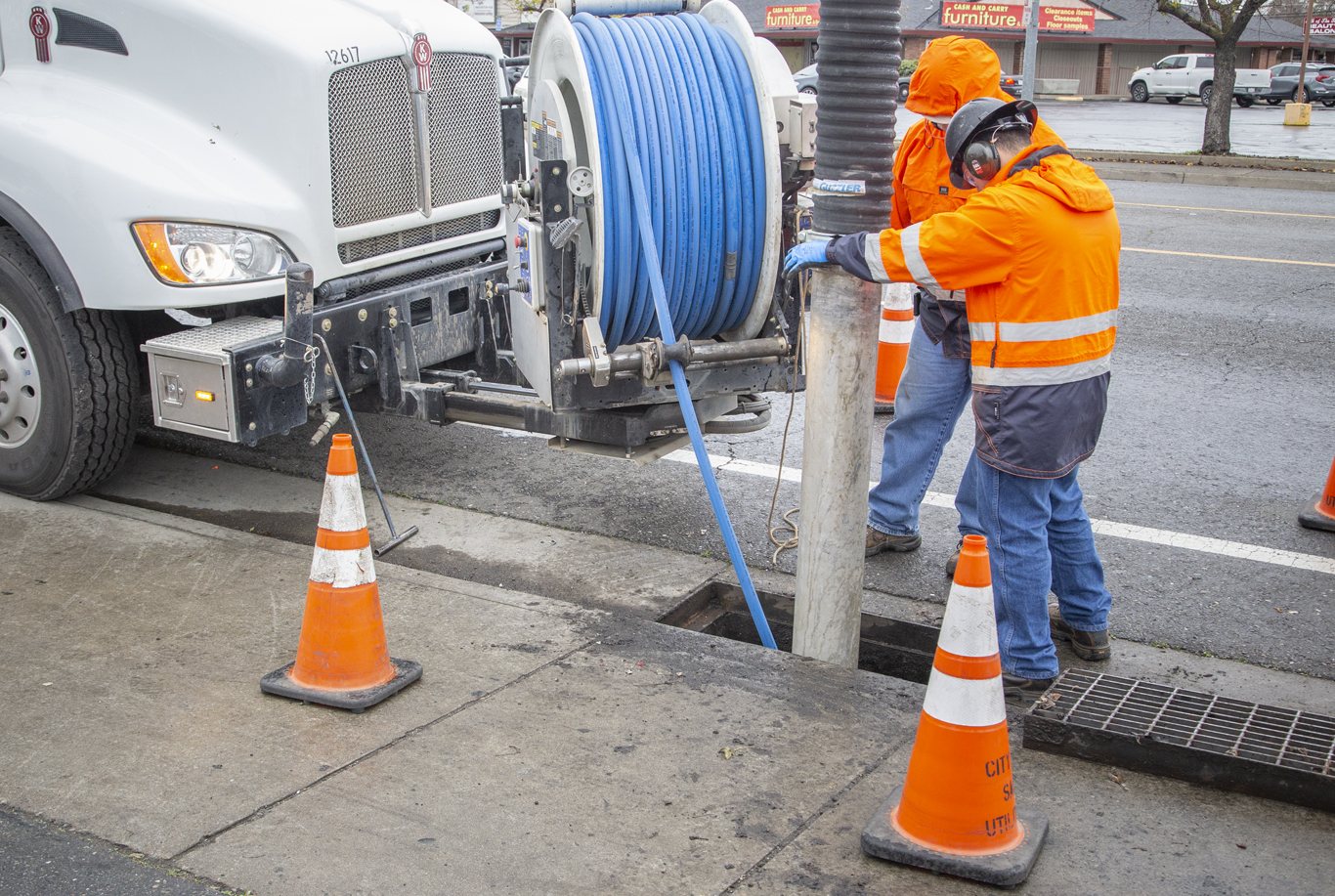
New, historic investments in regional economic recovery present our region with the opportunity to rebuild and grow, with a commitment to community and equity at the center of it. What have we done, and what must we do to take advantage?
This summer, we are seeing historic financial commitments to infrastructure, economic, environmental, and community resilience through both state and federal government channels. Just yesterday, the U.S. Senate passed a $1 trillion dollar infrastructure bill that will support expanded high speed internet access, roads, bridges, airports, Amtrak, and more. This will be the largest infusion of infrastructure investments in more than a decade and will certainly be felt within our region as those dollars get deployed across the country. In addition to infrastructure dollars, we have seen a significant commitment to recovery and community investment from both the Coronavirus Aid, Relief, and Economic Security Act (CARES), starting in 2020, and the American Rescue Plan Act (ARPA), passed in February 2021. The ARPA funds, which are just beginning to be deployed, will be used to meet pandemic response needs and rebuild a stronger, and more equitable economy as the country recovers. One example includes the Homeless Master Siting Plan that the City of Sacramento passed on Tuesday night, which will use $100 million in ARPA funds. We are seeing other ways the funds will be deployed including the Economic Development Administration’s recent release of a series of Notices of Funding Availability directed towards regional economic recovery.
In addition to these significant federal commitments, we are also seeing state investment opportunities. The state of California boasted an astonishing $75 billion budget surplus and, as a result, the 2021-22 California state budget and new recovery programs provide abundant opportunities for critical infrastructure improvements as well as needed community and regional recovery initiatives. For example, in late July, Governor Newsom made a $6 billion commitment to equitable and affordable access to broadband, providing needed dollars to close infrastructure and affordability gaps in underserved areas throughout the state. Additionally, the budget includes $3.7 billion for climate resilience, $600 million for inclusive regional economic development in a pending trailer bill, $1 billion for wildfire prevention and response, and $1 billion for workforce development statewide, to name just a few programmatic investments.

What does all this mean for our region? It means that we have the opportunity for big regional initiatives and bold, ambitious, and achievable goals. Luckily, we aren’t starting from scratch. We already have a roadmap for inclusive economic growth and an approved Comprehensive Economic Development Strategy in the Prosperity Strategy. We have bodies like the Capital Region Climate Readiness Collaborative, the Cleaner Air Partnership, the Connected Capital Area Broadband Consortium, the Sacramento Coalition for Digital Inclusion and many other regional and localized collaborative bodies who are shaping priorities and ideas for regional initiatives.
As we bring these investments into our region, we must all be committed to ensuring it is used to advance access to opportunity for all – particularly our neighborhoods and communities that have too often been overlooked. The rising tide must lift ALL boats. This is the time to build on our existing frameworks with additional inclusive, collaborative, and equity-centered planning to achieve bold, moonshot goals. What is your vision for a resilient, prosperous, equitable, and sustainable future for our region? Let’s work together to create impactful and bold initiatives that will serve our region and communities now and for generations to come. Contact us with any ideas or to stay engaged.
To keep up with Valley Vision’s work to advance livability in the Sacramento region, subscribe to our Vantage Point email newsletter!
Evan Schmidt is Valley Vision’s Chief Executive Officer.
Recap: Challenges and Opportunities in Our Region’s Food System
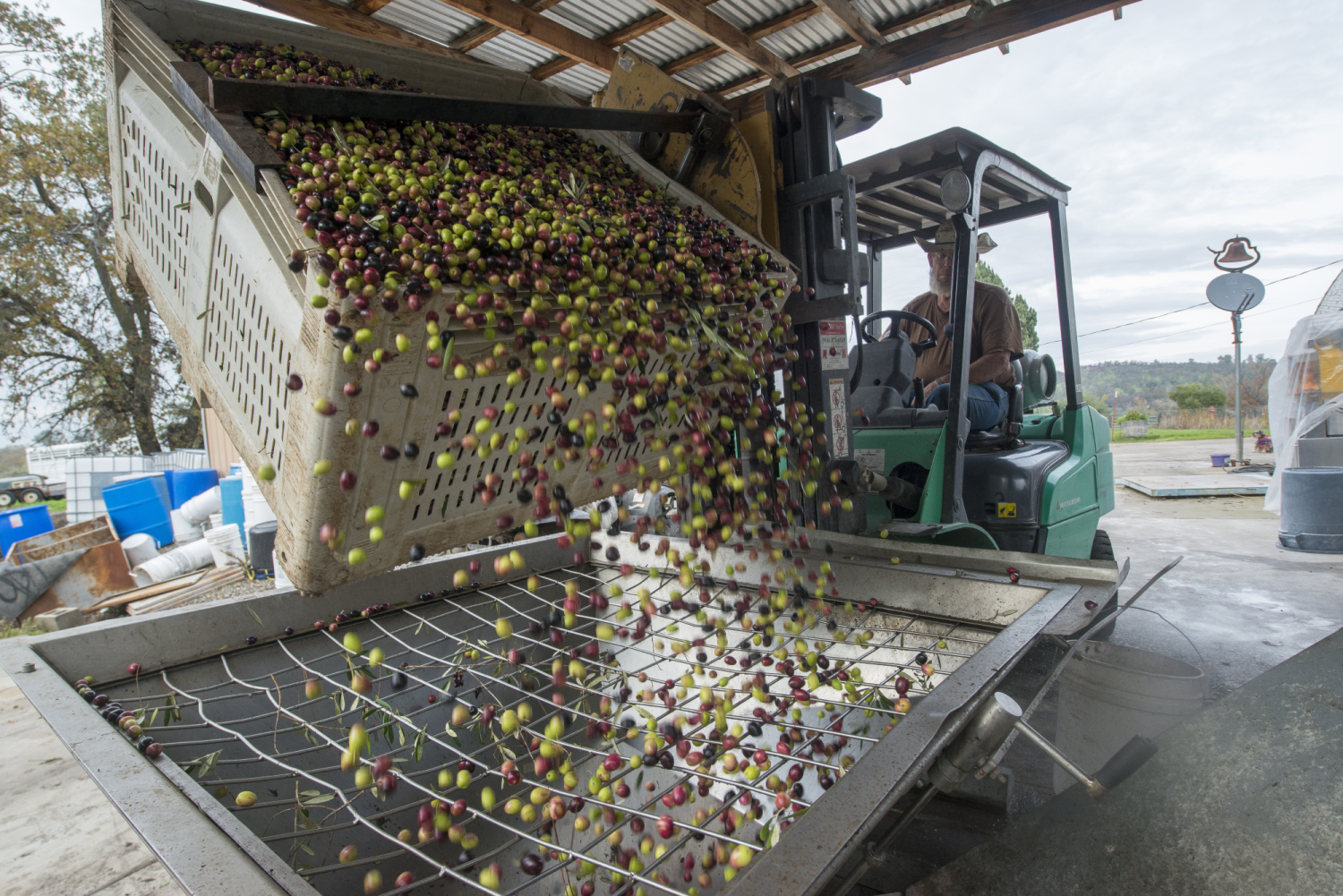
Valley Vision is proud to be researching and working alongside partners to support investment in the region’s food system.
Last month, as part of the 2021 Food System Action Plan update, Valley Vision hosted a series of Listening Sessions in topical areas as an opportunity to identify funding, capacity, and resource needs in the region’s Food System. We were joined by almost 200 participants who shared their expertise in workforce development and career pathways; viability of agriculture and land preservation; environmental sustainability and climate change; health and nutrition education; healthy food access and food security; and food economy and local market development.
Supported by the Sacramento Region Community Foundation, the 2021 Food System Action Plan (FSAP) is a regional food system investment strategy that will identify best practices, priorities, prevailing challenges, opportunities, and funding recommendations related to the region’s food system for the communities of El Dorado, Placer, Sacramento, and Yolo Counties. The goal is to increase the vitality of the region’s food system and to identify financing strategies and mechanisms to support a more equitable, health-promoting and accessible food system for all residents of the Greater Sacramento Region. The report will be released this Fall, and excitingly, for the first time, the report will be paired with a Food System Resilience Poll, in partnership with the Sacramento State Institute for Social Research (ISR) and Capital Public Radio. The poll covers similar topics related to the food system and will inform the Food System Action Plan. Both of these reports are slated to be released in Fall 2021.
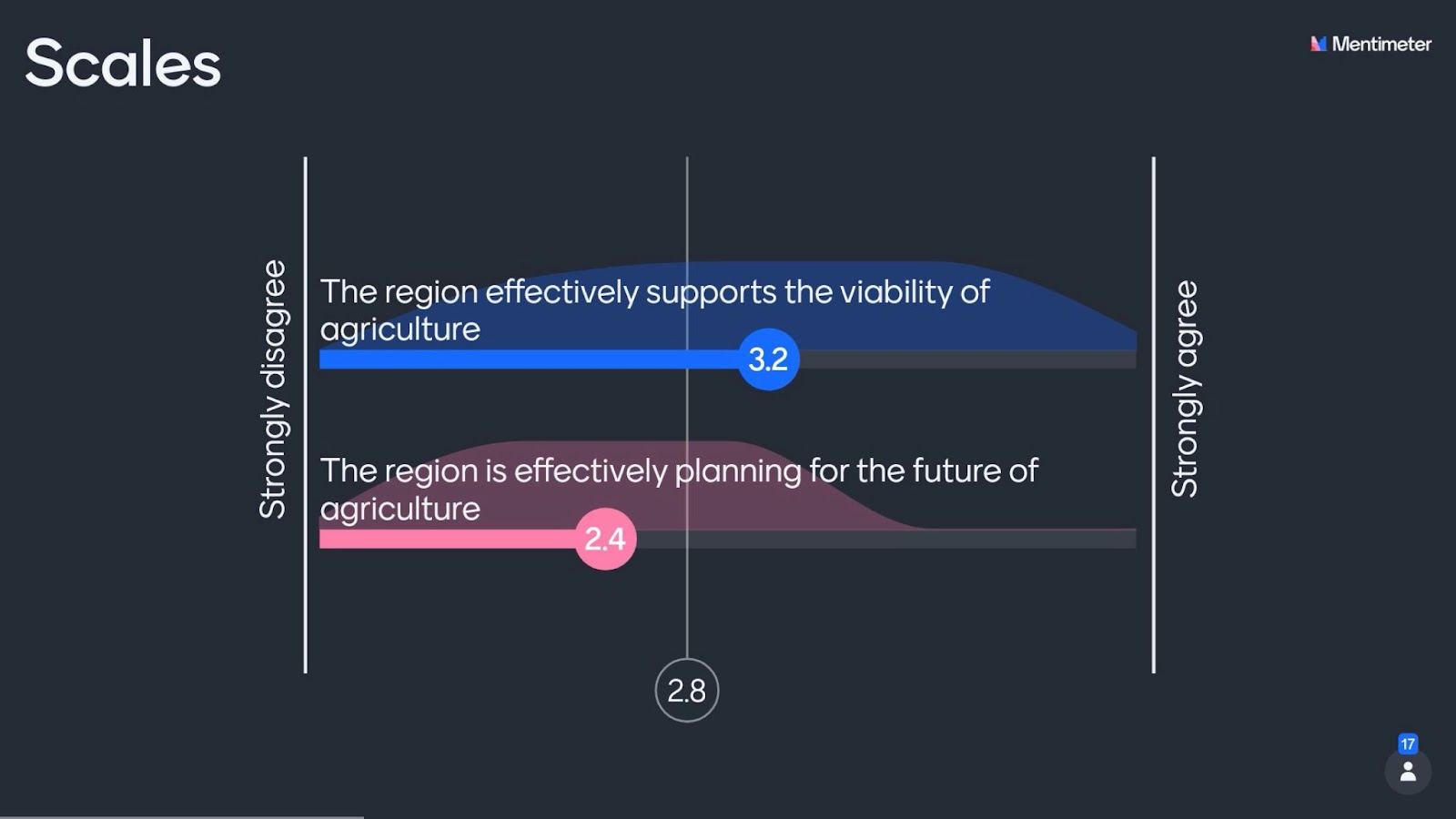
If you weren’t able to attend the listening sessions, below is a brief summary of each session:
- Session #1: The participants in the Careers in Food and Agriculture session discussed the manufacturing, processing, and distribution networks of the food system, illustrating the diversity of farm operations in the region. Although the session reminded us that the region has many successful Career Technical Education (CTE) programs in food and agriculture-which prepare high school students for college – challenges remain in sustaining, building, and retaining a local workforce, including the next generation of farmers and food producers. Lack of awareness of workforce opportunities and less than positive image were also challenges.
- Session #2: Land, capital and broadband access, agriculture technology, local markets, and land preservation were constant themes in the Viability of Agriculture session. Despite land conversion being a threat to agriculture’s viability, our region is doing better than others in the state; however, access to land to start a farm or a community garden remains a challenge. Workforce is another challenge.
- Session #3: During the Environmental Sustainability session, participants discussed local food production, food waste, edible food recovery, and the impacts climate change has had (and will have) on the food system, as is manifesting now. Although food hubs were discussed in some fashion in every session, in this session they were discussed extensively as a mechanism to reduce greenhouse gas emissions associated with transportation of produce and international trade and to provide additional capacity for packaging, processing and distribution of local produce for local consumption.
- Session #4: The Healthy Food Access and Food Security session showcased the strong network of nonprofits in the region, especially those in the emergency food system, who work to provide access to fresh, local, and nutritious food to under-resourced communities. In spite of the increased impact on this sector due to the pandemic, participants shared that consistent and expanded funding for infrastructure, organizational capacity and growth to manage the increased levels of clients and food remains a challenge.
- Session #5: In the Health and Nutrition session, the importance of family-based nutrition education and supply chain awareness was emphasized. A number of participants mentioned that most people are not aware of the correlation between food, health, and eating habits, and that robust educational support is needed to help promote healthy eating and nutrition literacy.
- Session #6: The Food Economy session focused on institutional purchases, entrepreneurship support, and local procurement partnerships. There are a significant number of small farmers in the region, but corporate producers can produce food for a lower price, making local food procurement and local economic development challenging. There are innovative efforts through schools and hospitals that can be models for increased local procurement and purchasing partnerships, support local producers and keep more dollars local.
The listening sessions revealed what most of us already know: As America’s Farm-to-Fork Capital, we have a lot of work to do but we have the infrastructure and the strong networks to do it. If we are organized as a region, we can better promote, support, and partner with one another to bring additional funding to the region. We look forward to sharing additional challenges, opportunities, and funding recommendations in the Fall when we release the 2021 Food System Action Plan.
The full recordings and presentation slides are available on Valley Vision’s website. If you weren’t able to attend the sessions and would like to provide comments for the FSAP, we have created a survey to gather additional input. Please reach out to Grace Kaufman (Grace.Kaufman@valleyvision.org) should you have any questions.
To keep up with Valley Vision’s work to advance livability in the Sacramento region, subscribe to our monthly Food and Ag newsletter!
Grace Kaufman is a Valley Vision Project Manager working in the Food and Ag and Clean Economy impact areas
A Broader Vision: Road Tripping Across America

Bigger rivers. The world’s largest Viking statue. The best mac and cheese I’ve ever had. A problematic coolant leak. All of these experiences and more contributed to an amazing 41-day road trip with my partner in June and July of 2021. It also brought a new perspective to my work at Valley Vision as l celebrated my seven-year anniVVersary last week (how time flies!).
Road trips are an American tradition – aligning the freedom of the automobile with the exploration of our country’s vast open spaces, beautiful national parks and forests, and distinct urban centers. For most of us mere mortals, our lives are largely confined to the physical spaces in which we live and work. So, to access a wider vision of our world by seeing the country – and a great deal of its nooks and crannies which you can only access by car – is a deeply rewarding experience. After a year of global trauma and emotional exhaustion resulting from the COVID-19 pandemic, this trip, for me, was sorely needed.
At Valley Vision, we’re focused on improving quality of life in our own Sacramento region, but we have also been at the center of important statewide projects like the Listos California Emergency Preparedness Campaign, and statewide leadership networks like the CA Stewardship Network. To learn from other regions, and to see their approaches to problem-solving firsthand, is a deeply valuable practice as we seek to improve our own region. Many of our local chambers of commerce organize ‘Study Missions’ to visit and learn from places elsewhere in the country just for this reason (one of which I was privileged to participate in back in 2018). So I took that line of thinking on the road with me and applied it as I explored other communities across the nation.

I committed to work remotely while on the road roughly half-time, continuing to move projects forward, participate in calls and meetings, and build the biweekly ‘Vantage Point’ email newsletter that people know and love. Cell coverage was sometimes more spotty than expected, accounting for time changes was a fun brain game, and coffee shops were a godsend (quite literally in one case, when a Christian coffee shop in Billings, MT allowed me to use their state-of-the-art conference room to facilitate the June Cleaner Air Partnership Luncheon on the day I was traveling from North Dakota to Yellowstone).
We spent time in a number of great places during our time on the road, and had very little “rest” time. I made it a point to explore the approaches to urbanism in each of these places, including architecture, use of space, and intangibles like the “energy” of a place. Checking out key landmarks was also a priority, such as ‘Tech Square’ in Atlanta, which Sacramento’s ‘Aggie Square’ is modeled on, or San Antonio’s famous River Walk, a world-class riverfront attraction. These small-scale ‘Study Missions’ exemplified the spirit of Valley Vision – to investigate and learn, but to have fun doing it.

We drove my trusty 2006 Honda Odyssey, which ran great until we hit Yellowstone. A coolant leak had me filling up the radiator with antifreeze and water every couple of hours for several days of touring Yellowstone, to avoid an overheated engine. I am convinced that a marmot or chipmunk chewed the water pump cable – an occurrence some high-elevation backpackers are familiar with. It was very nerve-racking to drive with an eye on the temperature gauge, and we eventually had to get it repaired in Spokane, WA before being on our way. My advice: check your fluids! And AAA, I learned the hard way, doesn’t provide roadside services in National Parks. We spent nights in the following places, either in a hostel, Airbnb, camping, or “boondocking” (sleeping in my van in a national forest or legal parking area), and the order of the list aligns with our route:
- Las Vegas/Red Rock Canyon
- Flagstaff/Grand Canyon
- Santa Fe
- San Antonio
- New Orleans/Atchafalaya National Wildlife Refuge
- Atlanta
- Charleston
- Charlotte
- Asheville/Great Smoky Mountains
- Cincinnati
- Detroit
- Chicago
- Minneapolis
- Theodore Roosevelt National Park (North Dakota)
- Yellowstone National Park/Grand Teton National Park
- Bigfork/Glacier National Park
- Spokane
- Seattle/Olympic National Park
- Portland
- Bend/Crater Lake National Park
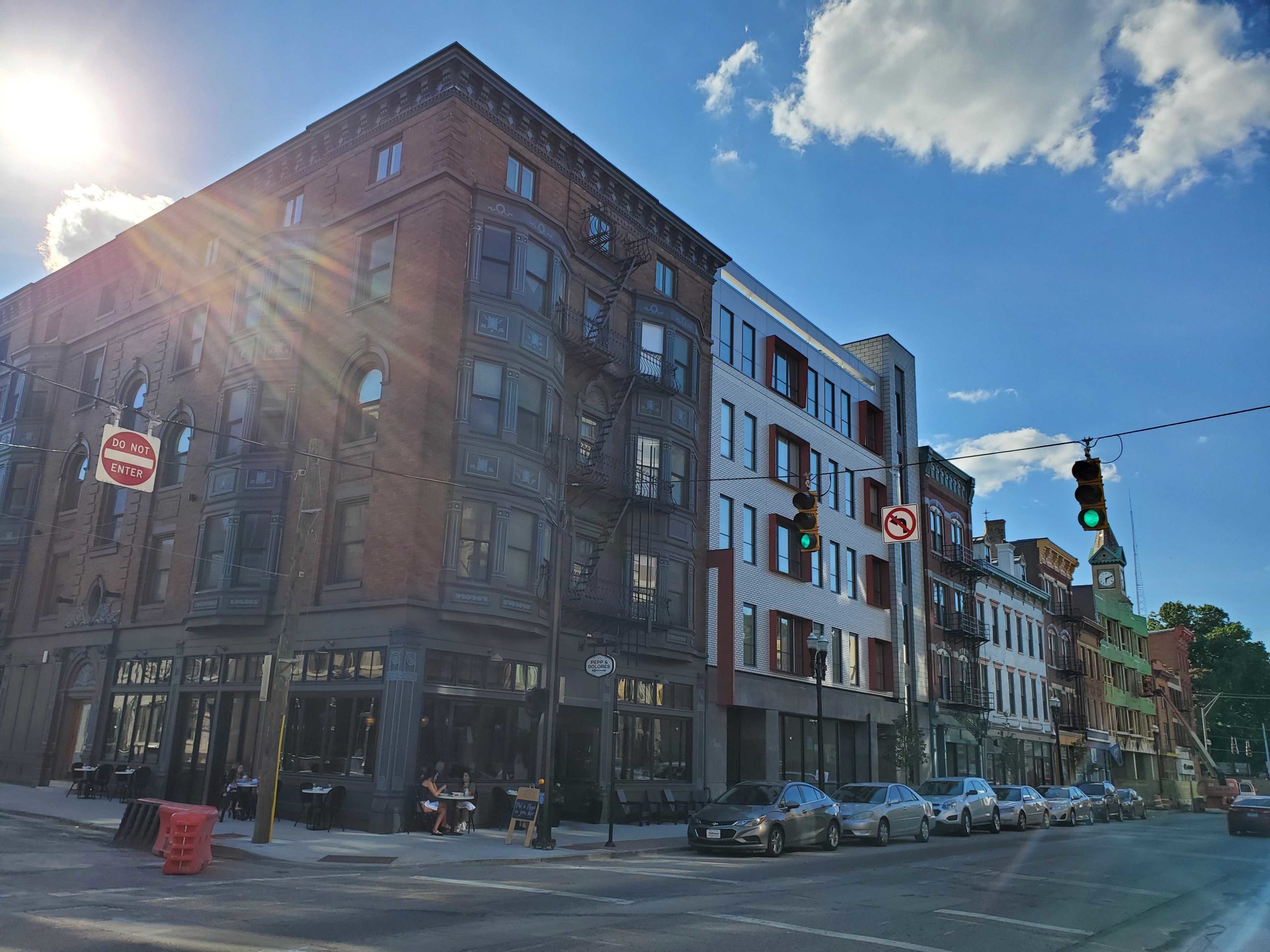
As a white male who has experienced deep privilege over the course of my life, it was important to educate myself on some of the history of the places we were passing through – particularly in the South. On our way from New Orleans to Atlanta, we made several stops at Civil Rights landmarks in places like Meridian, Mississippi and the Birmingham Civil Rights National Monument. The latter is home to an array of powerful statues and plaques commemorating the events of May 3rd, 1963, when top cop “Bull” Connor ordered his men to attack peaceful protesters and children with dogs, water cannons, and more. This was a horrific milestone and a turning point in the 1960s Civil Rights movement when images were published in the New York Times the following day. We also visited the tomb of Dr. Martin Luther King, Jr. and Coretta Scott King, which is located in “Sweet Auburn,” the neighborhood of Dr. King’s youth, and explored the National Center for Civil and Human Rights in downtown Atlanta, which powerfully linked Civil Rights history with the global inequities and injustices of the modern age. It was rather shocking how much of the history I had not been taught in class, and how much the framing of what I was taught differed from many of the personal accounts documented across these places of power.
Native American and Indigenous history was also a throughline of the trip, but it is deeply dismaying to see the lack of government recognition of the extermination and displacement of Native people across the country. It was particularly frustrating to see the vast majority of the items for sale in National Park gift shops being from non-Native sources. As we traveled from Detroit to Chicago, we stopped in Western Michigan to meet up with an old friend of my father who is an Elder in the Potawatomi Tribe of the Great Lakes area. We visited his Tribe’s highly successful casino and learned about how Tribes interact with the Federal government – gaining a deeper understanding of how tribal relationships with the Feds remain fraught, even today. It was a privilege to travel and learn this firsthand.
I haven’t processed the totality of my road trip experience, but it has given me a fresh layer of perspective on the work of Valley Vision and our many partners – including many of you reading this today. Your work and my work to make communities more livable is what it’s all about. We are attempting to solve the messy problems of our age, and doing it with a reverence for the past but also an excitement for what is to come. The desire to achieve this balance, while continuously learning and building trust, provides the energy and motivation to keep doing consistently challenging and sometimes thankless work to better our communities. We’ll continue to find our sweet spot as we collaborate on bold solutions that improve people’s lives – I hope you will too!
To keep up with Valley Vision’s work to advance livability in the Sacramento region, subscribe to our Vantage Point email newsletter!
Adrian Rehn is a Valley Vision Project Leader overseeing the Cleaner Air Partnership, Sacramento Neighborhoods Activating on Air Quality, and Valley Vision’s online communications. He can be reached at adrian.rehn@valleyvision.org.